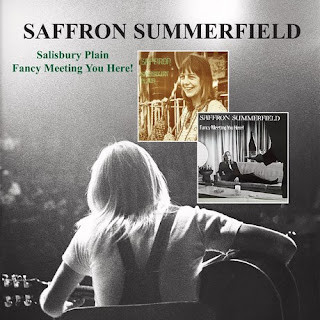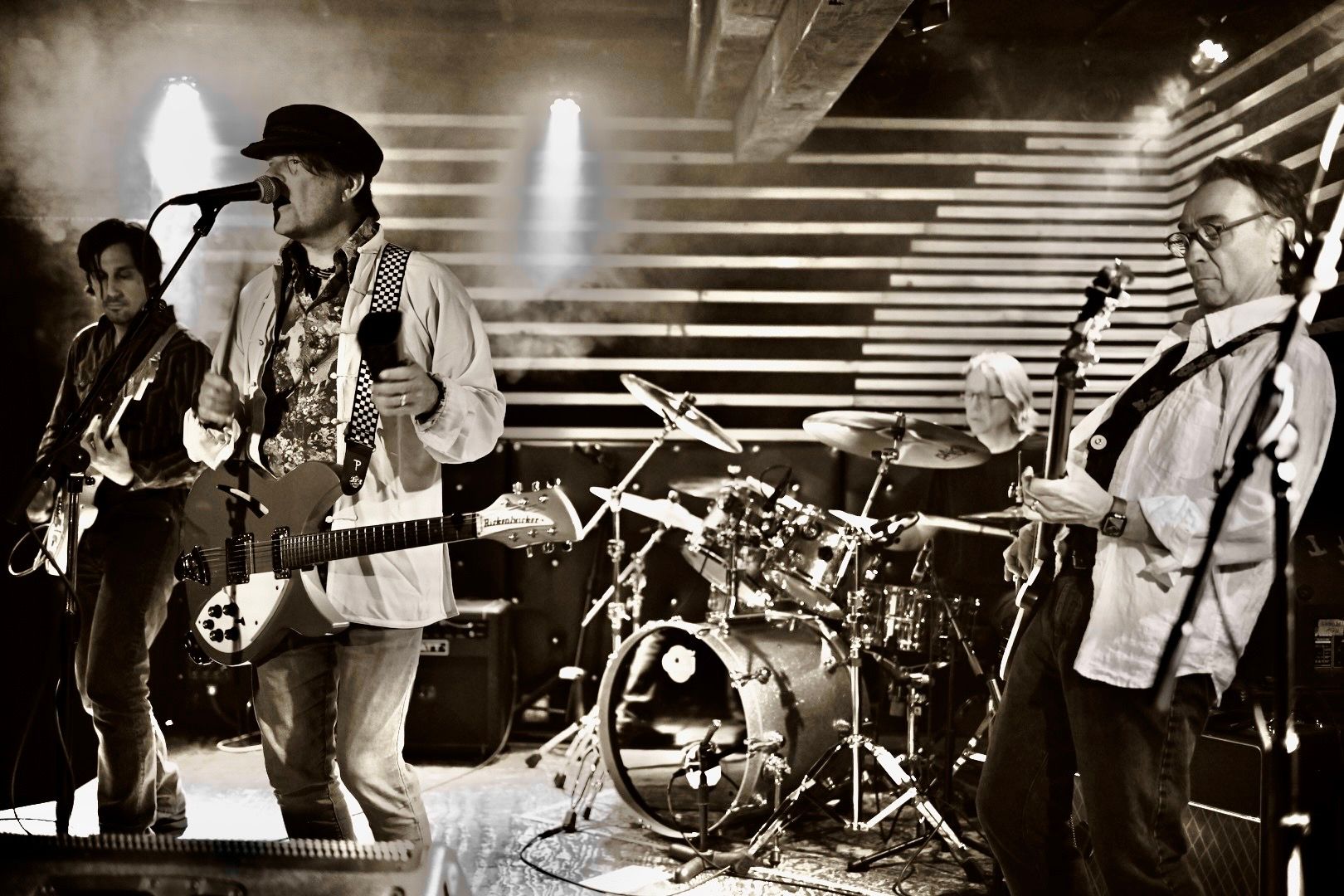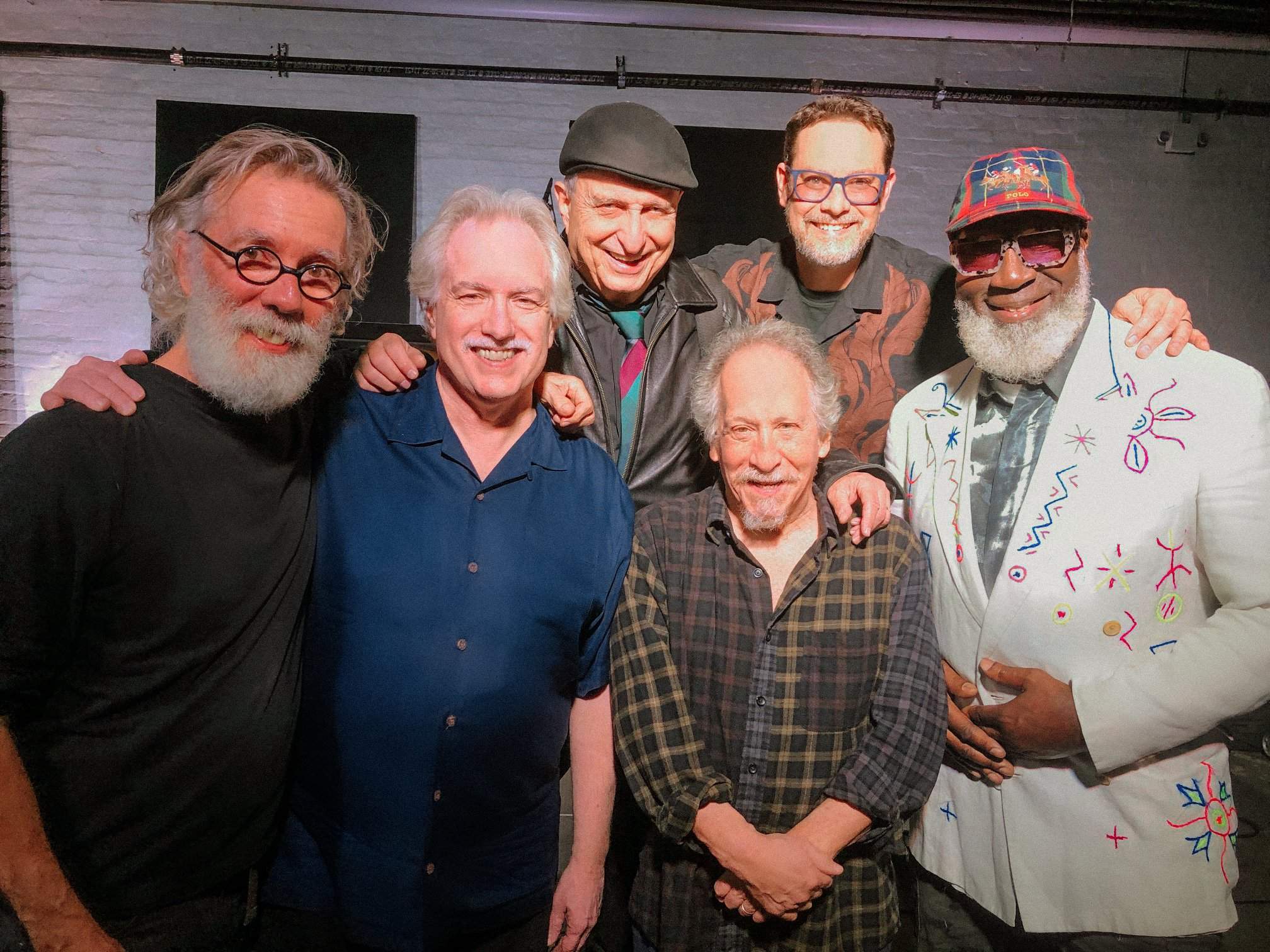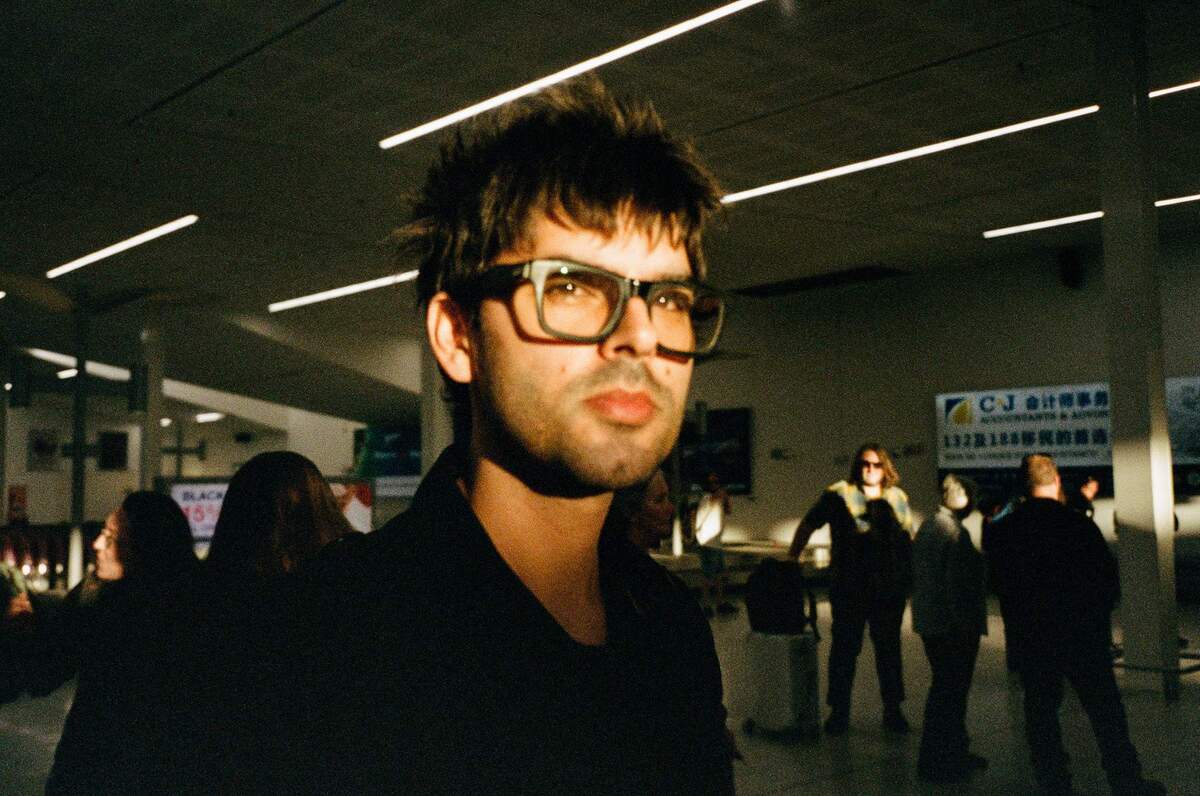Catherine Howe and Saffron Summerfield
Catherine Howe Because…It Would Be Beautiful
(Talking Elephant TECD 306, 54.27)
Saffron Summerfield Salisbury Plain / Fancy Meeting You Here!
(Talking Elephant TECD 309, 69.09)
Now and again an intriguing, sometimes
beautiful gem is picked up along the wayside while searching music’s byways. Should
have had more attention in their career, needless to say, yet musicians make
their own choices of course. These factors coincide regarding two contemporary female
singer-songwriters, Catherine Howe and Saffron Summerfield.
beautiful gem is picked up along the wayside while searching music’s byways. Should
have had more attention in their career, needless to say, yet musicians make
their own choices of course. These factors coincide regarding two contemporary female
singer-songwriters, Catherine Howe and Saffron Summerfield.
Born
in Halifax in 1950, Catherine Howe started as a named actress in now-cult T.V.
series such as Z-Cars, Doctor Who and
Dixon of Dock Green. Her music CV boasts
an Ivor Novello Award and The Sunday
Times Folk Album of the Year. Howe’s
1971 debut was What A Beautiful Place
on Reflection, a CBS subsidiary, the follow-up would have been with the
American Bobby Scott, co-writer of The Hollies’ hit He Ain’t Heavy He’s My
Brother, but the label folded and was unreleased until 2007 on Numero to
critical acclaim including five stars in The
Observer. The singer-songwriter worked in film music, involving lead vocal
for Ennio Morricone and other successes in Italy and Europe until two albums
for RCA: Harry (1975), which had some
acclaim when reissued as a single for the ludicrously-named prince’s birth in
1984, and Silent Mother Nature
(1976).
in Halifax in 1950, Catherine Howe started as a named actress in now-cult T.V.
series such as Z-Cars, Doctor Who and
Dixon of Dock Green. Her music CV boasts
an Ivor Novello Award and The Sunday
Times Folk Album of the Year. Howe’s
1971 debut was What A Beautiful Place
on Reflection, a CBS subsidiary, the follow-up would have been with the
American Bobby Scott, co-writer of The Hollies’ hit He Ain’t Heavy He’s My
Brother, but the label folded and was unreleased until 2007 on Numero to
critical acclaim including five stars in The
Observer. The singer-songwriter worked in film music, involving lead vocal
for Ennio Morricone and other successes in Italy and Europe until two albums
for RCA: Harry (1975), which had some
acclaim when reissued as a single for the ludicrously-named prince’s birth in
1984, and Silent Mother Nature
(1976).
An EP
of both title-tracks was one of the top 75 EPs of 1977. After music writing and
producing the BBC’s That’s Life and
contributing vocals to Michael Gile’s (King Crimson) Progress (1978, released 2002), she recorded Dragonfly Days (1979, Ariola). Despite BBC filmed concerts with
Judie Tzuke (1979) and Sacha Distel (1980) alongside tours with Chris de Burgh,
David Soul and Andy Fairweather-Low, she retired because her albums weren’t
even in the shops. During the re-issue of her catalogue by BGO, she returned
with Princelet Street in 2005 about where
her great-grandmother was born in 1851. This sense of history permeates all her
work —she’s also written a biography about the 19th century Halifax
secularist George Holyoake.
of both title-tracks was one of the top 75 EPs of 1977. After music writing and
producing the BBC’s That’s Life and
contributing vocals to Michael Gile’s (King Crimson) Progress (1978, released 2002), she recorded Dragonfly Days (1979, Ariola). Despite BBC filmed concerts with
Judie Tzuke (1979) and Sacha Distel (1980) alongside tours with Chris de Burgh,
David Soul and Andy Fairweather-Low, she retired because her albums weren’t
even in the shops. During the re-issue of her catalogue by BGO, she returned
with Princelet Street in 2005 about where
her great-grandmother was born in 1851. This sense of history permeates all her
work —she’s also written a biography about the 19th century Halifax
secularist George Holyoake.
Because…It
Would Be Beautiful features ten of her songs and four (two instrumentals) by
guitarist Vo Fletcher aided by violinist Ric Sanders (Fairport Convention, Soft
Machine etc) and Michael Gregory on drums.
(English Tale with Fletcher
was issued in 2009, and they sometimes guest with the Ric Sanders Group.) Recorded
at Morden Shoals Studio, engineered by its owner Graeme Taylor where local band
Gryphon also record, these are stories worth telling the singer says. The
jaunty violin-led title track was written in 1969 as an ode to a Dorset country
town while she worked in a London theatre dedicated to poor young actresses.
Shine Like A Star is an emotive, heart-felt love song like the singing style and
content of Veronique Acoustique (‘Where music keeps the spirit strong…I will
love you like a sanctuary, like a leafy glade bringing shade’). Tempo is upped
on Fletcher’s Hot Night: a folk-rock boogie mix in the later Fairport Convention
mode, with clipped lyrics suiting the rhythm drive. After the slow delight of
Who Would Know, the debut’s title track is revisited with spell-binding vocals
and violin.
Would Be Beautiful features ten of her songs and four (two instrumentals) by
guitarist Vo Fletcher aided by violinist Ric Sanders (Fairport Convention, Soft
Machine etc) and Michael Gregory on drums.
(English Tale with Fletcher
was issued in 2009, and they sometimes guest with the Ric Sanders Group.) Recorded
at Morden Shoals Studio, engineered by its owner Graeme Taylor where local band
Gryphon also record, these are stories worth telling the singer says. The
jaunty violin-led title track was written in 1969 as an ode to a Dorset country
town while she worked in a London theatre dedicated to poor young actresses.
Shine Like A Star is an emotive, heart-felt love song like the singing style and
content of Veronique Acoustique (‘Where music keeps the spirit strong…I will
love you like a sanctuary, like a leafy glade bringing shade’). Tempo is upped
on Fletcher’s Hot Night: a folk-rock boogie mix in the later Fairport Convention
mode, with clipped lyrics suiting the rhythm drive. After the slow delight of
Who Would Know, the debut’s title track is revisited with spell-binding vocals
and violin.
Sensitive awareness of history underpins the Steeleye Span-like This Old
Peg, a salute to returnees from world wars unwilling to speak of their
experiences. Charlie Bender is also a traditional-made-modern true ballad of a
baby left in a 19th century foundling Home, whose mother returned a
decade later against the social odds. (Sleeve notes repeat the common error 1800s,
an American misused term for century, when should refer to the decade 1800 to
1809, as in the 1830s etc.) The short Mayfair Cot, with fine guitar by
Fletcher, is based on an old photograph of a child clutching a gift of flowers
in her hospital bed. No weak songs culminate with the ten minute,
attention-holding epic Don’t Look Away that could grace—without
exaggeration—any Fairport or Strawbs platter. With fine production for this
Fletcher composition, it’s a powerfully timeless closer with an unforgettable
chorus (‘If I see you on the bridge/ If I ask you to forgive/ Don’t look away,
don’t look away…’), well-worth the entrance fee alone. Howe’s vocals are confident
and varied augmented by superb musicianship reminiscent of Magna Carta: an
evocative, memorable album that lingers longer with each spin.
Atmospheric musical/vocal dexterity is also a hallmark of Saffron
Summerfield, born ten months earlier in Weston Favel, part of post-war new suburbia
built near Kettering. She replaced Judy Dyble in legendary Trader Horne in ’72
and still recalls Peel’s Sounds of the
Seventies when Free’s queuing fans were so loud she couldn’t hear herself sing
during rehearsal. Influenced by Joni Mitchell, and looks like her too, she
started out in the early Bungies folk scene, sharing famed gigs by such as Bert
Jansch, Joan Armatrading, Sandy Denny, and Fairport Convention (in Holland and
Belgium where she became very popular). In the ’80s Saffron wrote for numerous
BBC and indie radio programmes plus two Channel Four documentaries (Six of Hearts). Musician in Residence at
Battersea Arts Centre for a couple of years, she turned to photography and performed
at music festivals worldwide.
In
1994, on her own and still-current label Mother Earth, Who’s [sic] Land Is It
Anyway? utilised nostalgic Breton pipes about the false modern assumption
that land is something to be owned rather than cared for as tenants of Nature,
as understood by indigenous peoples and the maverick, falsely-maligned
historian Oswald Spengler who believed countryfolk superior to decadent
urbanites. A passionate environmentalist, Saffron believes people grow
independently as part of the landscape and nature, and these thoughts continued
on Halcyon (Mother Nature 2011) which
merited four stars on the Psychedelic
Baby website. As with another 12-string virtuoso, Beau, there is a
consistent concern with history and environment. The two albums reviewed here part-featured
in a download The Early Years (2000)
which one reviewer opined ‘qualifies as a hidden treasure’.
1994, on her own and still-current label Mother Earth, Who’s [sic] Land Is It
Anyway? utilised nostalgic Breton pipes about the false modern assumption
that land is something to be owned rather than cared for as tenants of Nature,
as understood by indigenous peoples and the maverick, falsely-maligned
historian Oswald Spengler who believed countryfolk superior to decadent
urbanites. A passionate environmentalist, Saffron believes people grow
independently as part of the landscape and nature, and these thoughts continued
on Halcyon (Mother Nature 2011) which
merited four stars on the Psychedelic
Baby website. As with another 12-string virtuoso, Beau, there is a
consistent concern with history and environment. The two albums reviewed here part-featured
in a download The Early Years (2000)
which one reviewer opined ‘qualifies as a hidden treasure’.
Recorded at Highbury Studios in North London in 1974 engineered by its
owner Curly Clayton, like its follow-up two years later (both leased to Polydor
in Europe), Salisbury Plain features
eight self-penned tracks plus the traditional border ballad The Dowie Dens
O’Yarrow (aka The Braes of Yarrow), a well-documented song in the repertoire of
Jansch, Ewan MacColl and Shelagh McDonald among many others. Printed as a
broadside and in Walter Scott, it laments a conflict between men of various
social classes about one woman—Dowie in Scots and Northumbrian means
sad/dismal, and den is a wooded valley—for a beguiling five-minute-plus interpretation.
The opener’s energetic strumming (Meet You There) leads into the happy Natural
Life accompanied by Mick Rogan’s recorder and bongos. The title track features deliciously
slow solo harmonium (the same unadorned style as the next album’s closer, Picture
In A Frame) for present-day activities, as far removed from Nico as the title
track is from the old ballad (Martin Carthy etc) of that name about a lover and
her blade or Wordsworth’s poem.
The
traditional feel is returned to for Will The Ploughman Ever Return, upbeated
Span-style with adroit finger-picking about when it is announced that the king is
dead. The Sisters of St. Mildred is almost a yearning for the simple life of
nuns in the fields, probably Benedictines as she names the 8th
century abbess saint of what is now Thanet. Six Years Or More recounts her recent
music life, name-dropping Peel, and relationships in general without
mawkishness. Closing with jugband-like A Little Dutch Toon, like the infectious
spirit-lifter Francis Road Rag, shows she can be fiery as well as a balladeer.
Accompanied by George Norris (guitar, vocals), Laurie Rodes (bass) and Alison
Bailey (cello) on both albums, Fancy
Meeting You Here! opens also with manifesto-like strumming comparing
adulthood to the girl she was (I Won’t Stand Up).
traditional feel is returned to for Will The Ploughman Ever Return, upbeated
Span-style with adroit finger-picking about when it is announced that the king is
dead. The Sisters of St. Mildred is almost a yearning for the simple life of
nuns in the fields, probably Benedictines as she names the 8th
century abbess saint of what is now Thanet. Six Years Or More recounts her recent
music life, name-dropping Peel, and relationships in general without
mawkishness. Closing with jugband-like A Little Dutch Toon, like the infectious
spirit-lifter Francis Road Rag, shows she can be fiery as well as a balladeer.
Accompanied by George Norris (guitar, vocals), Laurie Rodes (bass) and Alison
Bailey (cello) on both albums, Fancy
Meeting You Here! opens also with manifesto-like strumming comparing
adulthood to the girl she was (I Won’t Stand Up).
The
simply-titled Lewis muses about separated love, treated more bitterly on Taurus
and with melancholy on September and the lilting Touching. Violin (David Gaster)
and piano/clavichord (Ian Armit) adds breadth, but all her songs are so unalike
as to spark regret that they end too soon. Fuzz interludes, more restrained
than Tractor on Beau’s Dandelion albums, span Passion For A Child, contrasting
with keys/strings on the nostalgic title track about time passing for working
women as if observant nannies in the park from a bygone era. A darker, bass-string
/ violin fuelled Eleanor Rigby is a three-minute cover as was the stand-alone
Yarrow on the first album (this being a Beatles-free review zone I can’t
compare to the original). The hypnotic harmonium closer simply provokes a replay
of the whole work.
simply-titled Lewis muses about separated love, treated more bitterly on Taurus
and with melancholy on September and the lilting Touching. Violin (David Gaster)
and piano/clavichord (Ian Armit) adds breadth, but all her songs are so unalike
as to spark regret that they end too soon. Fuzz interludes, more restrained
than Tractor on Beau’s Dandelion albums, span Passion For A Child, contrasting
with keys/strings on the nostalgic title track about time passing for working
women as if observant nannies in the park from a bygone era. A darker, bass-string
/ violin fuelled Eleanor Rigby is a three-minute cover as was the stand-alone
Yarrow on the first album (this being a Beatles-free review zone I can’t
compare to the original). The hypnotic harmonium closer simply provokes a replay
of the whole work.
Many
of these songs are still performed today with 6/12 string or harmonium. Saffron
is also one of the few women acoustic bottle-neck guitarists, a technique
learned after travelling around Mississippi in 1977 jamming with bluesmen like
Eugene Powell in cotton-field tin shacks. A rich melodious voice (with a little
vibrato for one ending, a technique developed more on later albums) and
versatile guitar work, Saffron’s records are ‘full of passion and skill’ (Bright Young Folk). Some byways feel like
highways for music travellers.
of these songs are still performed today with 6/12 string or harmonium. Saffron
is also one of the few women acoustic bottle-neck guitarists, a technique
learned after travelling around Mississippi in 1977 jamming with bluesmen like
Eugene Powell in cotton-field tin shacks. A rich melodious voice (with a little
vibrato for one ending, a technique developed more on later albums) and
versatile guitar work, Saffron’s records are ‘full of passion and skill’ (Bright Young Folk). Some byways feel like
highways for music travellers.
X. Isle-Barbranski
– Brian R. Banks
© Copyright http://www.psychedelicbabymag.com//2016
Array





